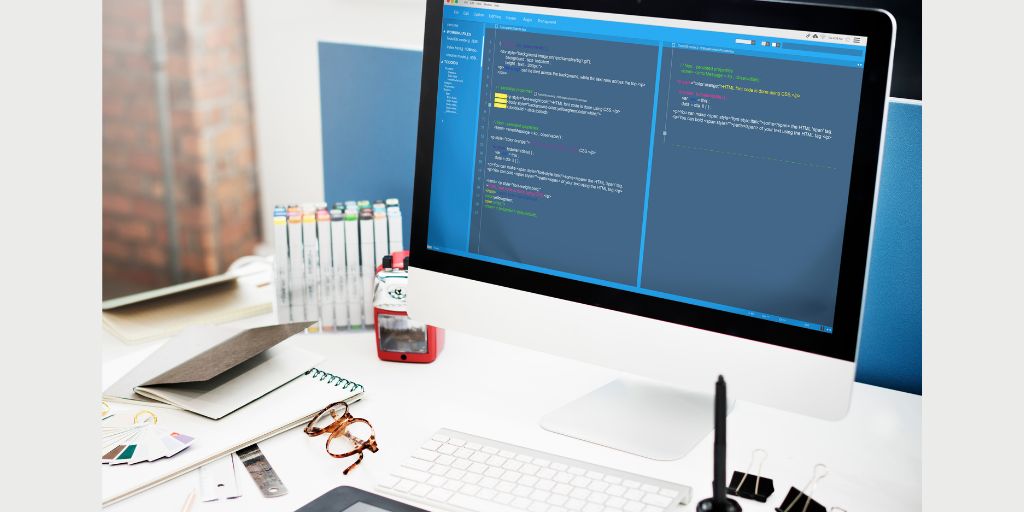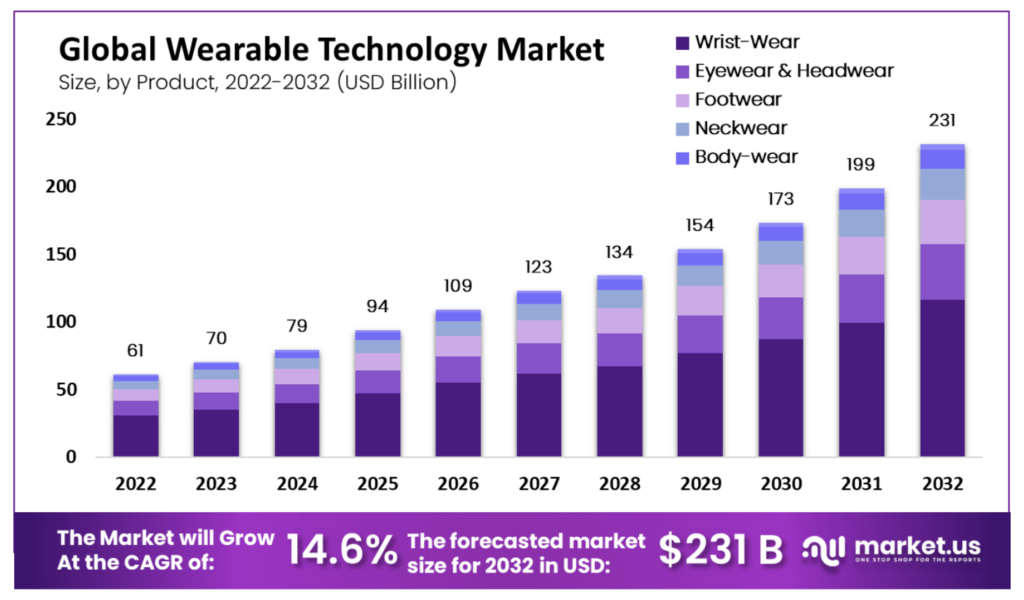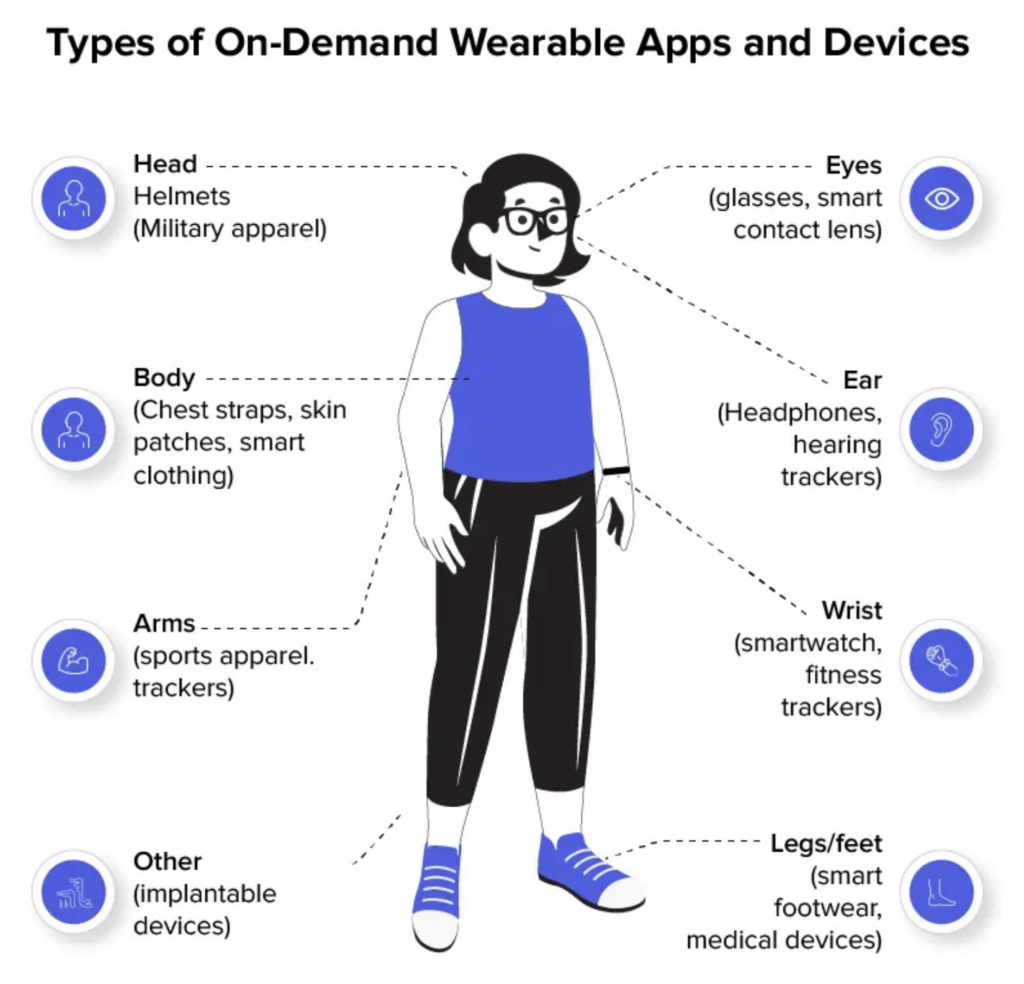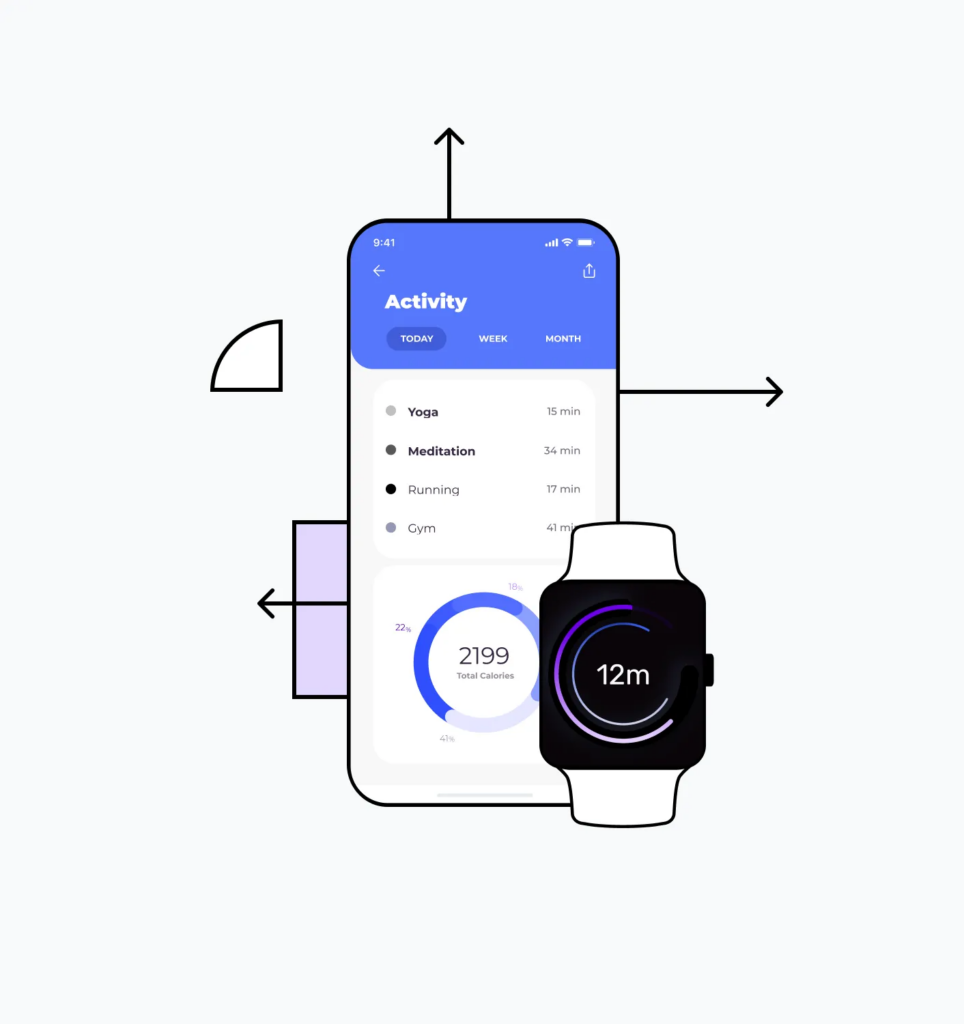 In today’s fast-paced digital landscape, wearables have transcended their initial tag of ‘futuristic gadgets’ to become fundamental cogs in the expansive machinery of our tech ecosystems. Consumers are no longer just looking for a gadget that counts steps or delivers notifications; they’re seeking tools that can augment their lifestyles, improve health outcomes, and even pave the way for immersive experiences. Therefore, functioning at the intersection of data-driven insights and real-time user engagement, state-of-the-art wearables stand as a testament to the leaps and bounds by which technology evolves. Read on to explore the experts’ view on the ins and outs of wearable engineering and the way they put their expertise into practice when creating one of their novel healthcare solutions.
In today’s fast-paced digital landscape, wearables have transcended their initial tag of ‘futuristic gadgets’ to become fundamental cogs in the expansive machinery of our tech ecosystems. Consumers are no longer just looking for a gadget that counts steps or delivers notifications; they’re seeking tools that can augment their lifestyles, improve health outcomes, and even pave the way for immersive experiences. Therefore, functioning at the intersection of data-driven insights and real-time user engagement, state-of-the-art wearables stand as a testament to the leaps and bounds by which technology evolves. Read on to explore the experts’ view on the ins and outs of wearable engineering and the way they put their expertise into practice when creating one of their novel healthcare solutions.
Brief overview of the growth in the wearables market
The trajectory of the wearables market has been nothing short of meteoric in recent years. What started as a niche segment, mostly dominated by fitness trackers and smartwatches, has blossomed into a diverse market encompassing a plethora of devices ranging from health monitors to augmented reality glasses.
As for 2022, Market.us reported that the global wearables market value had reached $61.3 billion that year, with a forecasted valuation of $231 billion by 2032, signaling a compounded annual growth rate of over 14.6%.
 Key factors driving this upsurge include technological advancements, a growing awareness of personal health and wellness, and the integration of advanced features like AI and augmented reality. For instance, health-focused wearables are no longer limited to counting steps or monitoring sleep; they now offer features like electrocardiogram (ECG) readings, blood oxygen level detection, and stress measurement. Similarly, in the realm of entertainment, products like AR glasses are setting the stage for revolutionary immersive experiences.
Key factors driving this upsurge include technological advancements, a growing awareness of personal health and wellness, and the integration of advanced features like AI and augmented reality. For instance, health-focused wearables are no longer limited to counting steps or monitoring sleep; they now offer features like electrocardiogram (ECG) readings, blood oxygen level detection, and stress measurement. Similarly, in the realm of entertainment, products like AR glasses are setting the stage for revolutionary immersive experiences.
Furthermore, as smartphones reach saturation in several markets, tech giants are banking on wearables as the next frontier for growth. Companies like Apple, Samsung, and Fitbit are continuously innovating, both in terms of hardware design and the software that powers these devices. This has led to a symbiotic relationship between the wearables and the software development sectors, each propelling the other to new heights.
Understanding wearables
Wearables, in their essence, are electronic technologies or computers specifically designed to be worn on the body. These devices seamlessly meld the physical and digital worlds, acting as a bridge to relay information between the two.

As the tech landscape burgeons, the umbrella of wearables has broadened to shelter a wide range of devices. Let’s cast a spotlight on some primary categories:
- Fitness trackers. These are the pioneers in the wearables world, initially aimed at the health-conscious demographic. Today’s trackers count steps, monitor sleep patterns, gauge workout intensities, and even offer insights into your cardio health. By collating data like heart rate, steps taken, and calories burned, they serve up a comprehensive view of one’s daily physical activities.
- Smartwatches. Think of these as an extension of your smartphone, snugly wrapped around your wrist. Beyond showing time, smartwatches notify you about incoming calls, messages, or app notifications. They often come equipped with fitness tracking capabilities and may include features like GPS, music controls, and even mobile payment options.
- Medical devices. These have carved out a niche by offering features tailored for health monitoring and diagnostics. For instance, devices can measure glucose levels without invasive needles or continuously monitor heart rhythms, alerting users to irregular patterns.
- Smart glasses. These bring augmented reality (AR) and heads-up displays to the mainstream to address navigation, complex industrial assignments, etc.

Diverse wearables collect, process, and store information as follows:
- Fitness trackers and smartwatches, normally, handle data about physical activities, health metrics, e.g. heart rate or sleep quality, and user preferences for notifications or alarms. Some even track location through GPS.
- Medical devices, as a rule, manage critically sensitive data, e.g. blood sugar levels, electrocardiograms (ECGs), body temperature, and oxygen saturation.
- Smart glasses are visually intensive and process data in real time to overlay digital information or visuals onto the user’s field of vision. They may also handle user commands, gestures, or voice inputs.
 Challenges in developing software for wearables
Challenges in developing software for wearables
Developers, in this case, grapple with a unique set of hurdles distinctly different from traditional software landscapes.
Device diversity and fragmentation
Unlike the relatively standardized domains of desktop or mobile devices, the wearable realm sprawls out in a myriad of directions. Here’s a peek into the challenges of device diversity and fragmentation developers grapple with:
- Screen sizes and resolutions: From the compact displays of fitness bands to the more generous screens of smartwatches and the visual expanse of smart glasses, wearables come in a wide spectrum of screen sizes. But it isn’t just about the size; the resolutions vary too. Crafting a UI that’s both intuitive and visually appealing across such diverse screens feels akin to threading a needle in the dark. Developers often need to think out of the box, ensuring their interfaces scale gracefully without sacrificing user experience.
- Diverse wearables boast unique hardware setups. A medical wearable might be outfitted with sensors to monitor blood oxygen levels, while a fitness tracker, in turn, might prioritize accelerometers and heart rate monitors.
- Operating systems and updates: While some gadgets run on popular platforms like Wear OS or watchOS, others sport proprietary systems crafted by manufacturers. To throw another wrench in the works, these systems are constantly evolving, with updates rolling out at irregular intervals. Developers must ensure their software remains compatible with the latest versions while not alienating users from older ones.
- Connectivity variations: Not all wearables come with a full suite of connectivity options. While some might boast standalone 4G or Wi-Fi capabilities, others might lean heavily on Bluetooth connections tethered to smartphones. Designing software that remains functional and efficient, regardless of its connectivity backbone, requires meticulous planning and testing.
While the above-described diversity fosters innovation, it also demands adaptability. Thus, engineering solutions for wearables necessitates balancing device specifics with overarching functionality, ensuring that users across the spectrum enjoy a seamless, glitch-free experience.
Power and performance limitations
Wearables are often constrained by battery life. Smaller form factors mean smaller batteries, yet users matter-of-factly expect day-long, or even longer, usage.
A significant aspect of power optimization lies in discerning between active and passive states. Does a fitness tracker need to continuously monitor heart rates, or can it afford to take periodic readings? By tweaking such parameters, developers can ensure that devices sip, rather than gulp, their power during standby modes.
Experts from Andersen say: “Sometimes, the trick isn’t to make the wearable do more but less”. Offloading certain heavy-duty tasks to paired smartphones can be a game-changer. Instead of the wearable crunching data or fetching online content, these tasks can be relayed to a phone, with the wearable merely displaying the results, thus conserving energy.
Screen brightness is often a silent battery drainer. By integrating adaptive brightness that reacts to ambient lighting, wearables can cut down on unnecessary power usage. Similarly, reducing screen-on time by using intuitive gestures or voice commands can further stretch the battery life.
User interface (UI) and user experience (UX) design challenges
Small screens call for innovative interaction patterns. While taps and swipes are part and parcel, integrating gesture controls, like wrist rotations, or haptic feedback can create a richer, more interactive experience. It’s not just about touching the screen but feeling the device respond.
Furthermore, wearable tech is all about quick interactions. Users want to glance at their devices, get the needed information, and move on. Thus, data representation needs to be immediate and impactful. Whether it’s bold numbers for fitness metrics or color-coded notifications, the info should pop up at first sight.
Data privacy and security concerns
Wearables are not merely devices, they’re confidantes, privy to the most intimate details of a person’s life — be it the number of steps they take, the quality of their sleep, their geolocations, or even the rhythm of their heart or mental health metrics. Such closeness necessitates a robust shield of privacy and security, especially in an age where data breaches can erode trust in a heartbeat.
Medical wearables elevate the stakes even higher. Devices that monitor specific health parameters, or assist in medical treatments, don’t just grapple with standard data security issues but also have to swim through the turbulent waters of regulations. In many jurisdictions, they need to comply with standards like HIPAA in the U.S., ensuring patient details are well-protected.
 With consideration to the above, the age-old principle of seeking permission isn’t just courteous; it’s mandatory. Users should be clued into what data is being collected, how it’s being used, and whom it might be shared with. Moreover, brands must champion the cause of educating users about safe practices, like setting strong passwords or regularly updating device firmware. Transparent opt-in and opt-out mechanisms are not just best practices; they’re emblematic of a brand that respects user autonomy.
With consideration to the above, the age-old principle of seeking permission isn’t just courteous; it’s mandatory. Users should be clued into what data is being collected, how it’s being used, and whom it might be shared with. Moreover, brands must champion the cause of educating users about safe practices, like setting strong passwords or regularly updating device firmware. Transparent opt-in and opt-out mechanisms are not just best practices; they’re emblematic of a brand that respects user autonomy.
Data security isn’t just about safely storing information but also safeguarding it during transmission. As wearables often sync with cloud servers or paired devices, ensuring end-to-end encryption during these data transfers is paramount to thwart potential interceptions.
Lastly, wearable manufacturers must roll out software updates and patches promptly to seal any potential security loopholes.
Connectivity and synchronization issues
Seamless integration comes with its fair share of sour challenges in connectivity and synchronization that developers can’t afford to gloss over.
The very first hurdle often lies in the initial pairing between the wearable and its companion device or devices. While Bluetooth technology has matured, issues like device discoverability, secure pairing, and maintaining a stable connection persist.
Secondly, wearables are often data-rich devices. Whether it’s detailed fitness statistics or health parameters, the data needs to flow to either a paired device or a cloud storage solution. Limited bandwidth can create bottlenecks, causing delays in data transfer or even data loss. Optimizing the data package size and transfer frequency is crucial to navigate this issue.
Thirdly, wearables often find themselves in so-called connectivity gray zones, be it during an outdoor run, in a swimming pool, on a tennis court, or at a clinic. Dealing with intermittent connections without disrupting user experience or losing data requires a robust offline mode and smart data buffering strategies.
Fourthly, constantly maintaining a connection can quickly drain a wearable battery. Developers need to find a sweet spot, balancing the need for real-time data syncing with power conservation. Techniques like conditional synchronization, where the device only connects when certain criteria are met, can be invaluable.
Lastly, updates must not disrupt existing synchronization processes, and users should be alerted when data can’t be synced and given manual override options to attempt re-syncing.
Rapid technology evolution and updates
New sensor technologies, advancements in machine learning algorithms, and improvements in battery life — these are just the tip of the iceberg. The swift cadence of technological improvements means that wearable software can quickly become outdated if not regularly refreshed. Software updates aren’t just about slapping on new features but are a necessary step to keep the device in sync with the broader tech ecosystem. As new software versions roll out, there remains a lurking challenge in ensuring that updates don’t alienate users who own older device versions.
The process of pushing software updates to wearables should be as frictionless as possible. Whether it’s an over-the-air (OTA) update or through a paired device, the user experience must be straightforward. Frequent updates, while essential for adding features and improving user experience, are also vital for patching security vulnerabilities.
Finally, failing to educate end-users on new features and changes in user interfaces can lead to confusion and reduced engagement. Release notes, interactive tutorials, or in-app tips can help users get acclimated to the new environment.

Vitaliy Vasylenko, Senior Vice President at AndersenI am motivated to implement a reliable product that meets customer’s preferences. I am an energetic and results-oriented Chief Delivery Officer with nearly 10+ years of experience.








